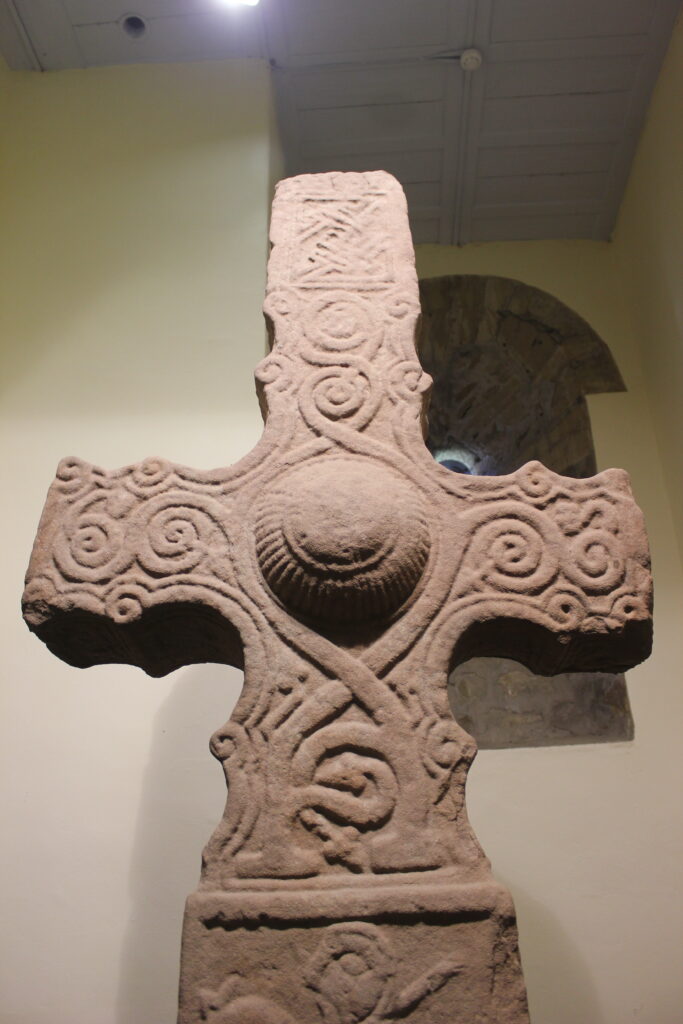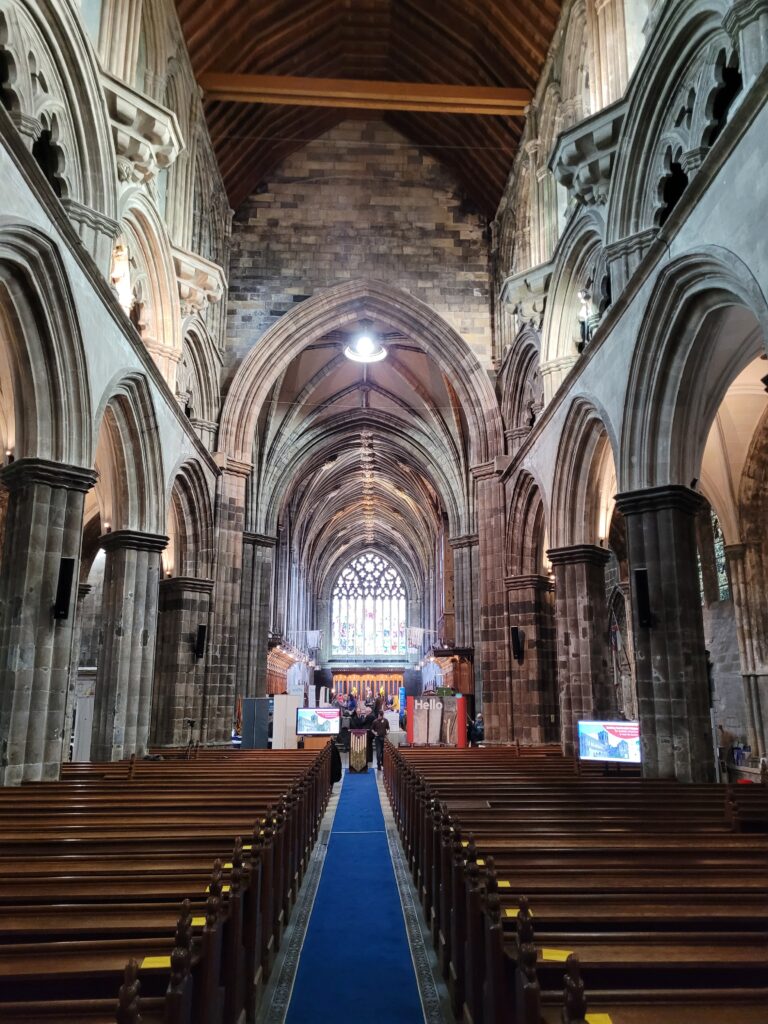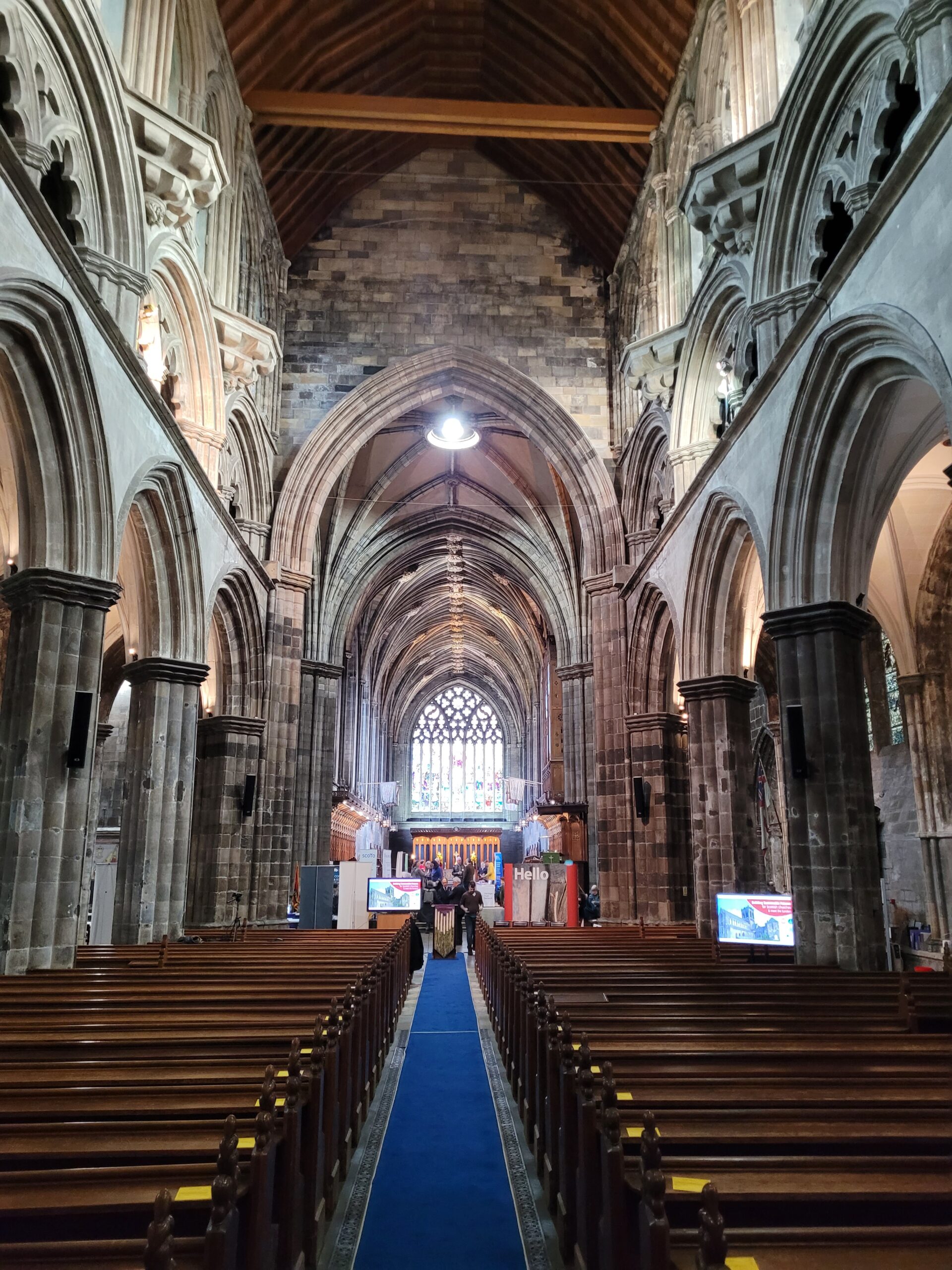Guest Post from Prof Adam Cumming
Prof Cumming has worked as a research scientist for over 40 years in the defence field. He is an Honorary Professor in the University of Edinburgh School of Chemistry.
He has a life-long interest in church architecture and history, particularly Scottish, and this led him to become a Fellow of the Society of Antiquaries of Scotland as well as to membership of other related organisations. He became firstly a supporter and then a Trustee of Scotland’s Churches’ Trust before becoming its Chair in October 2022. This led to his becoming a Trustee of the Scottish Pilgrim Routes Forum. He has lectured on Scottish church architecture to several groups. His work involvements allowed him to visit many churches across Europe and has observed similarities in approach and architecture.
Interest in music is reflected in his support for both the Scottish Chamber Orchestra and the Royal Scottish National Orchestra.
My lifetime interest in churches developed from architecture but grew to include other things such as history, music etc, and how they fit into all parts of life. Churches do not exist in isolation. They reflect the culture and its changes and are part of the community and the nation. In many ways they are interconnected and are hosts for the memory of the people. That means that learning about one building should lead to others so you can see how they are linked! So many sites and places in Scotland need that recognition as they are a part of the whole. They are individual but connected and not just across Scotland.
I have been constantly delighted as I discover more; the churches in Scotland reflect our history and culture and while related to those elsewhere they are distinct. There is common ground but that is limited. In many ways their development is closer to that in other parts of Northern Europe and separate from England. That needs both understanding and publicity, with examples.

All that is why I am involved in both Scotland’s Churches Trust and the Scottish Pilgrim Routes Forum. It is a way of telling people about what we have and the connections. It is also why I joined Soc Ant and have given talks on the area.
One area of importance across Europe is pilgrimage – moving thoughtfully through the land and the history usually with church buildings as a focus. It was important in Scotland, with Whithorn, Glasgow and Dunfermline amongst the sites. It is another part of the culture and heritage.

Pilgrimage was recognised as important by SCT and the need for a unified approach produced SPRF which coordinates an overall approach and certifies routes after assessment. It encourages visits and arranges places to stop with champing and open churches. SPRF like SCT stresses awareness of heritage, the history of the routes and their reasons for existing both now and in the past. I find when you learn how connected things are understanding can grow.

As routes old and new are developed there are other activities such as the creation of a Fife Pilgrim Route pastor, and links with other similar bodies across Europe. We can support and learn from each other, and it illustrates the connections with Europe!

Ruins form part of this connectedness for they link to living buildings whose contents enrich the pilgrimage and the sense of cultural heritage. They should form part of the network together with the intact buildings. There are always things to discover and new insights, or so I find.
Our thanks to Adam Cumming for sharing his reflections in this post and at our launch event

